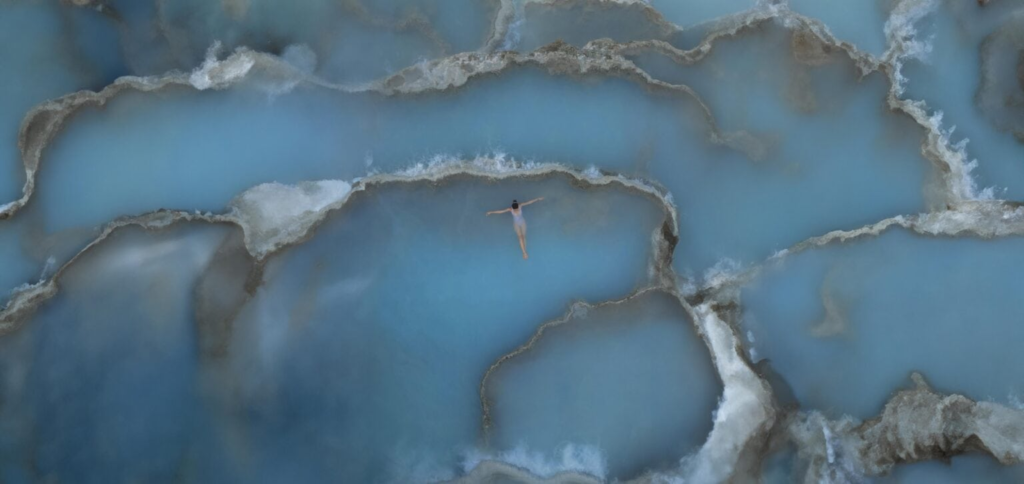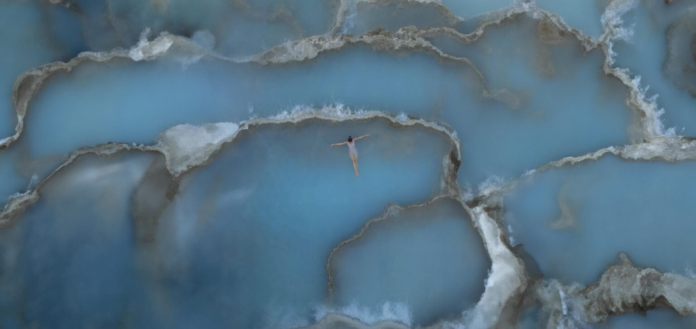
Nestled in the heart of Tuscany, Saturnia is a charming village renowned for its natural hot springs, scenic landscapes, and rich history. This guide provides all the information you need to plan an unforgettable trip to Saturnia, Italy. Saturnia is a spa town in Tuscany in north-central Italy that has been inhabited since ancient times. It is a frazione of the comune of Manciano, in the province of Grosseto. Famous for the spa which gives it its name, its population is 280.
There is also: Terme di Saturnia – Obviously, Saturnia’s main and most famous attraction has got to be the thermal springs.
History
Saturnia’s history dates back to ancient times, with its origins rooted in Etruscan and Roman civilizations. According to legend, the thermal springs were created by the god Saturn, who, in a fit of rage, hurled lightning bolts at the earth. The town’s name and the healing properties of its waters have attracted visitors for millennia, making it a significant historical and cultural site.
https://www.discovertuscany.com/maremma/thermal-baths-of-saturnia.html#google_vignetteSaturnia’shttps://www.discovertuscany.com/maremma/thermal-baths-of-saturnia.html#google_vignette origins have been lost in time, so much so that it’s considered one of the oldest cities of the “Italica Villanoviana” period.
Archaeological finds, dating back to the Neolithic and Bronze Age periods, reveal the presence of activity even before the Etruscans. An example of this is the Bagno Santo (Sacred Bath), a holy place where ancient civilisations carried out religious rituals.
What is certain is that Saturnia already existed in the 7th century B.C., when the Etruscans controlled central Italy, but known as Aurinia. It fell in the hands of the Romans when, thanks to its strategic location near Pian di Palma necropolis, the river Albegna, and the thermal waters, they seized it and renamed it Saturnia.

The Roman Empire then build the Via Clodia, an important trade route connecting Via Cassia and Via Aurelia, to facilitate trade with the Etruscan colonies. Via Clodia passed through Saturnia, thereby enabling the town to develop and prosper until the arrival of Goths and Lombards.

Throughout the Medieval era, Saturnia suffered atrocities at the hands of the Saraceni and the Senesi. Finally, in 1500, peace was restored when the Granducato di Toscana, of the Medici family, became governor until the town was annexed by Kingdom of Italy.
ARCHAEOLOGICAL AND ARCHITECTURAL REMAINS
Much evidence of Saturnia’s history can be found amongst the various visible remains, namely: the Area Archeologica Urbana, the walls, the four wall entrances including the well-preserved Porta Romana, the Acquarum castle, and the Bagno Secco.
Saturnia’s Roman walls have been restored and rebuilt by the Senesi population in the 16th century. The archaeological museumis home to a number of items dating back to Etruscan times, as well as from the Neolithic and Bronze ages.

Where to Go
Thermal Springs

The main attraction of Saturnia is its thermal springs. The Cascate del Mulino, a series of natural waterfalls and pools, is a must-visit. The warm, sulfurous waters are said to have therapeutic properties, offering a relaxing and rejuvenating experience. Saturnia’s thermal baths are the bubbling waters seeping through the Earth’s crust in an area stretching from Mount Amiata to the hills of Albenga and Fiora.
Archaeological Sites
Explore the remnants of ancient civilizations at the nearby archaeological sites. The remains of the Roman baths and the ancient walls of Saturnia provide a glimpse into the town’s storied past.
Much evidence of Saturnia’s history can be found amongst the various visible remains, namely: the Area Archeologica Urbana, the walls, the four wall entrances including the well-preserved Porta Romana, the Acquarum castle, and the Bagno Secco.
Medieval Village

Saturnia is a small medieval village in the Maremma hinterland in the heart of Tuscany. The town stands at the point where Europe’s largest hot spring emerges, with a flow rate of 800 liters of hot water per second and a large natural basin known as “”the little Italian Caribe”” or “”al Caverone.
Stroll through the medieval village of Saturnia. With its narrow streets, charming stone houses, and historical landmarks, it offers a picturesque setting for leisurely exploration.
Places to Stay
Luxury Accommodations
- Terme di Saturnia Natural Spa & Golf Resort: A five-star resort offering luxurious amenities, including a golf course, spa treatments, and access to private thermal pools.
- Saturnia Tuscany Hotel: A boutique hotel with stunning views of the Tuscan countryside, complete with a wellness center and gourmet dining.
Budget-Friendly Options
- Hotel Villa Clodia: A cozy and affordable option located near the thermal springs.
- B&B 8380: A charming bed and breakfast offering comfortable rooms and a welcoming atmosphere.
Why is Saturnia Known For
Saturnia is primarily known for its thermal springs, which are among the most famous in Italy. The therapeutic properties of the sulfurous waters have made it a sought-after destination for wellness tourism. Additionally, the picturesque landscapes, rich history, and charming medieval village contribute to its reputation as a top travel destination.
Tourism
Saturnia attracts a diverse range of tourists, from those seeking relaxation and wellness to history enthusiasts and nature lovers. The thermal springs are a major draw, but the area’s scenic beauty, historical sites, and culinary delights also play a significant role in its appeal.
Waterfall
The Cascate del Mulino is the most iconic natural feature of Saturnia. These waterfalls cascade into a series of natural limestone pools, creating a stunning and serene environment. The constant flow of warm water maintains a comfortable temperature year-round, making it an ideal spot for bathing and relaxation.
Map
A detailed map of Saturnia can be found at local tourist information centers or online. This will help you navigate the village, locate key attractions, and plan your visit efficiently.
Food
Tuscany is renowned for its culinary heritage, and Saturnia is no exception. Local restaurants offer a variety of traditional dishes, including:
- Pappardelle al Cinghiale: Wide pasta ribbons with wild boar sauce.
- Ribollita: A hearty vegetable and bread soup.
- Bistecca alla Fiorentina: A famous Florentine steak.
- Tuscan Wines: Sample local wines such as Brunello di Montalcino and Morellino di Scansano.
Weather
Saturnia enjoys a Mediterranean climate, characterized by hot summers and mild winters. The best time to visit is during the spring (April to June) and fall (September to October) when the weather is pleasant, and the landscape is lush and vibrant.
Expenses
Accommodation
- Luxury hotels: €200-€400 per night
- Mid-range hotels: €100-€200 per night
- Budget options: €50-€100 per night
Dining
- Fine dining: €50-€100 per person
- Mid-range restaurants: €20-€50 per person
- Budget meals: €10-€20 per person
Attractions
- Thermal springs: Free (Cascate del Mulino), €20-€30 for private pools
- Historical sites: €5-€10 per entry
Transportation
- Car rental: €40-€80 per day
- Public transport: Limited, but local buses are available
Total Estimated Daily Expense
- Luxury: €300-€500
- Mid-range: €150-€300
- Budget: €70-€150
Is it worth going to Saturnia hot springs?
Saturnia hot springs are rich in sulfur and therefore have a positive effect on those who struggle with respiratory ailments, musculoskeletal aches, the skin and digestive system problems. The thermal water springs from the ground and cascades down the slope forming several small pools.
How hot are the Saturnia hot springs?
Thermal waters
The sulphurous spring water is at a temperature of around 37.5 °C (99.5 °F). The main thermal waterfalls are the Mill Falls, located at an old mill as well as the Waterfalls of Gorello. The yield of the source is about 800 liters per second, which guarantees an optimal replacement of water.
Is Saturnia hot springs man-made?

Also known as the Mill Falls (“Cascate del Mulino” in Italian), the Saturnia Hot Springs are a group of natural, free, and open-air hot springs located near the town of Saturnia in Tuscany, Italy.
What is the story of Saturnia?

Legend has it that he grew tired of the constant wars of humans, and sent a thunderbolt to earth that created a magic spring of warm sulphurous water which would pacify mankind. Dionysius of Halicarnassus lists Saturnia as one of the towns first occupied by the Pelasgi and then by the Etruscan civilization.
What is the thermal bath capital of the world?
Budapest
Now with over a dozen thermal bath locations in the city, Budapest thrives on spa culture, and for good reason. Roman settlers discovered that the waters were rich in dissolved minerals and could be used for relaxation and medicinal purposes.
What is the history of Saturnia Italy?

In 1300, Saturnia became the hideout of outlaws and was razed to the ground by the Sienese. Forgotten for several centuries, Saturnia was rediscovered in the late 19th century when the land around the spring was drained and a spa built. Thousands of visitors come to bathe in the waters to this day.
Is Saturnia Italy worth visiting?

Saturnia thermal springs, known as ‘Terme di Saturnia’ (Terme means thermal) or ‘Cascate del Mulino’ (with cascate meaning cascade, or, waterfall) is one of the most unique places in the Tuscan countryside. It is a must visit to the amazing Saturnia hot springs, for anyone that is planning on visiting the region!
Is Saturnia closer to Rome or Florence?
Saturnia is located about halfway between Rome and Florence, and can be visited from either city. It’s a bit of a long day trip, but doable from both.
Conclusion
Saturnia, with its blend of natural beauty, historical significance, and therapeutic waters, offers a unique travel experience. Whether you’re seeking relaxation, cultural enrichment, or a taste of Tuscan cuisine, this charming village has something to offer every traveler. Plan your visit to Saturnia and immerse yourself in the tranquility and history of this remarkable destination.
